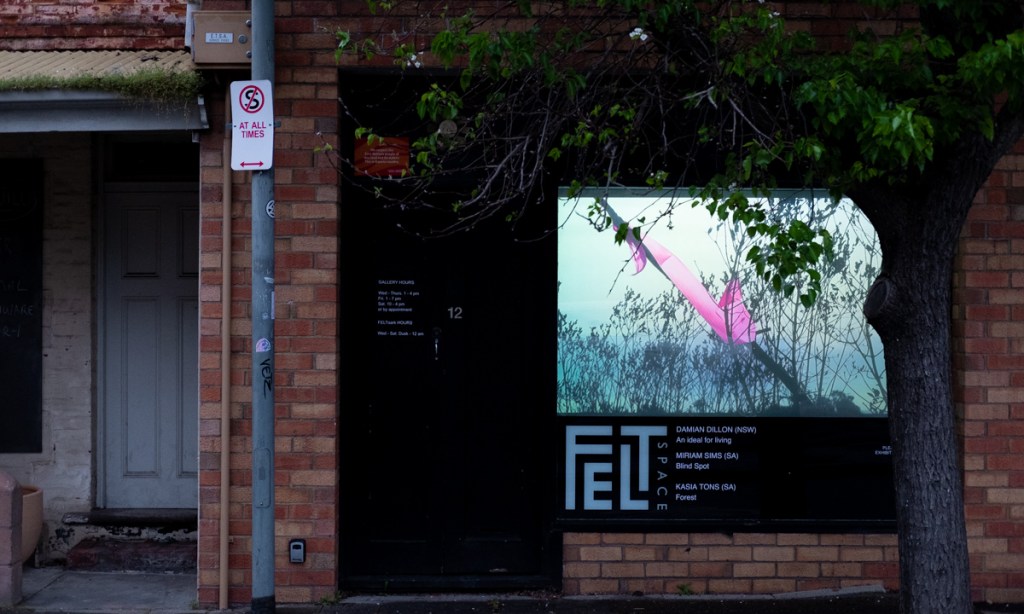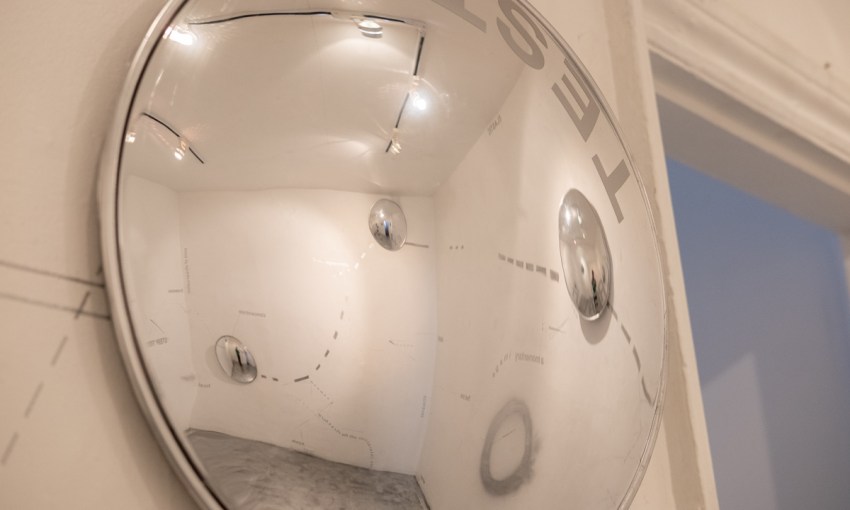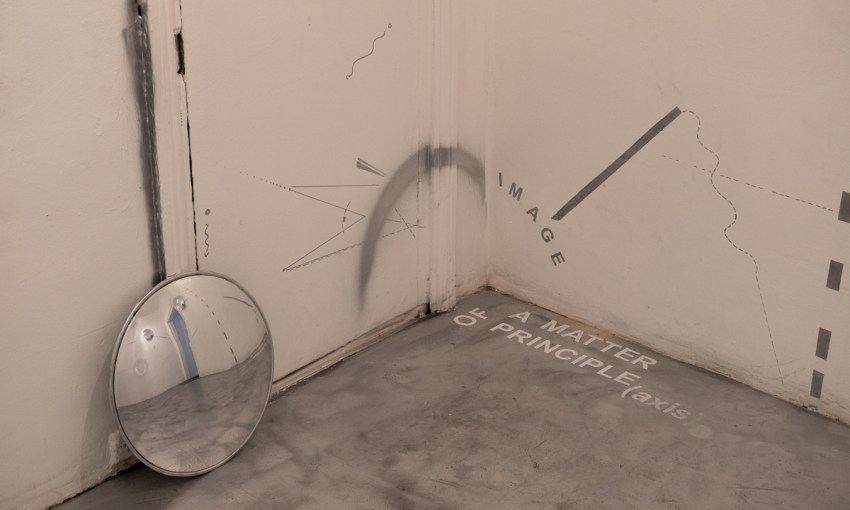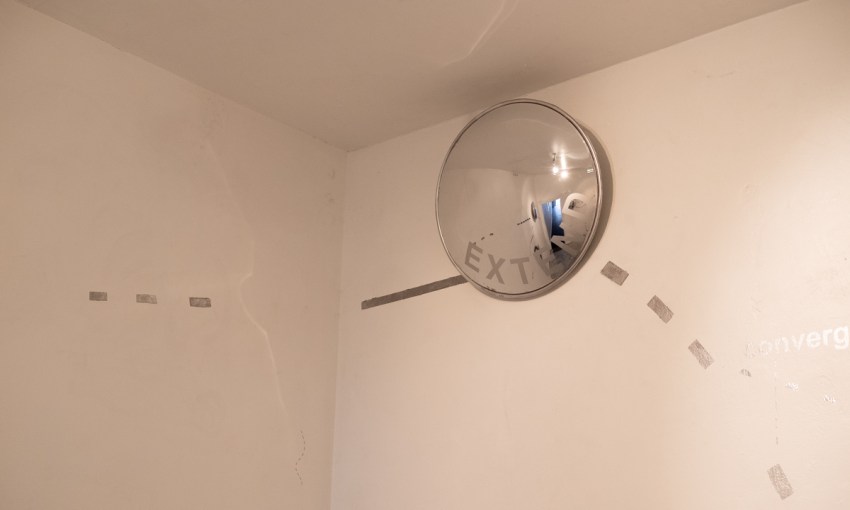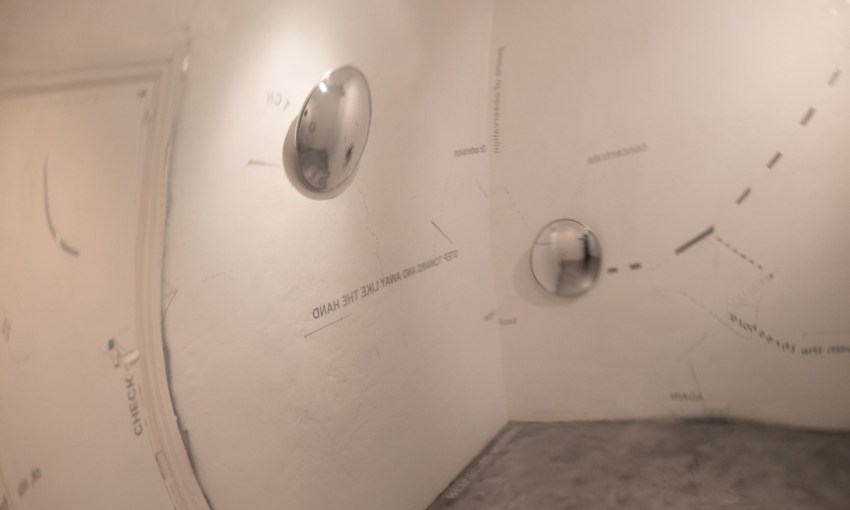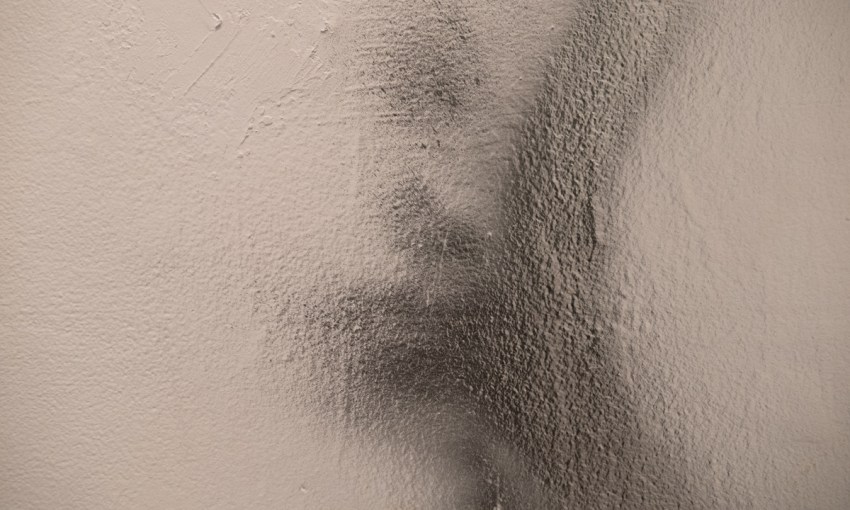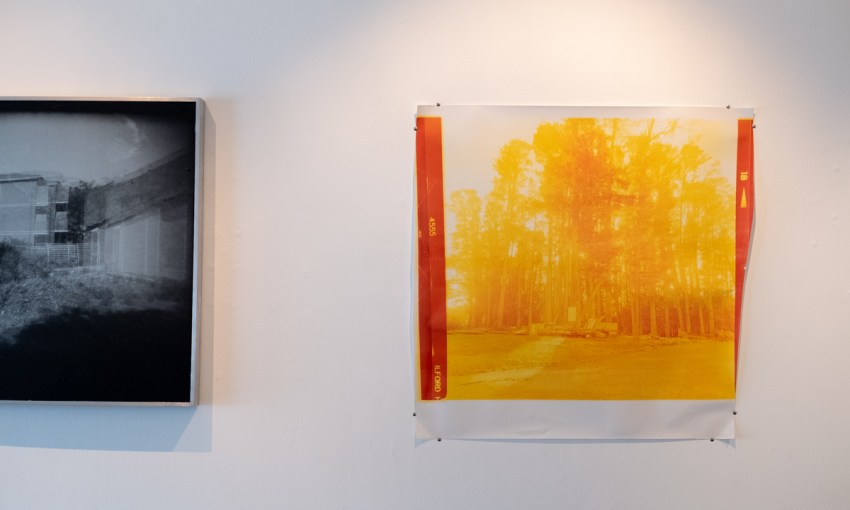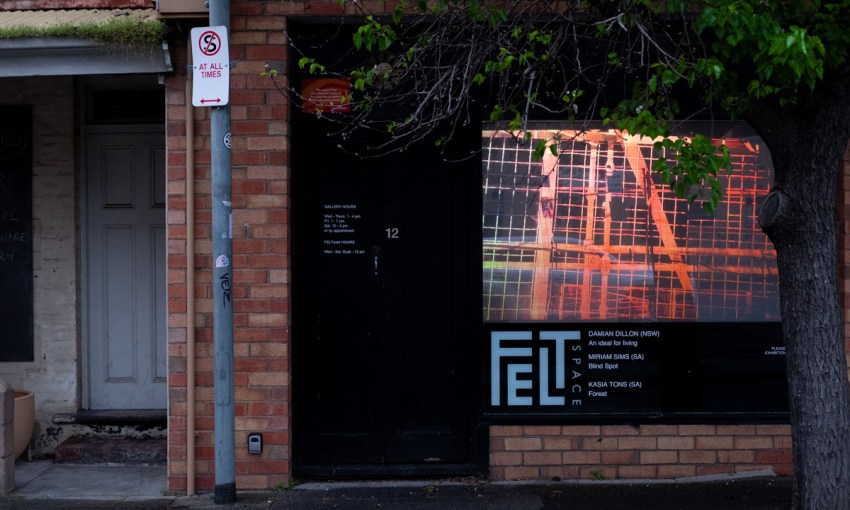The September—October FELTspace exhibitions are about the spaces in which we exist – their evolution, urbanisation, construction, deconstruction and our interaction with them.
Reflections on a room
As I push the door open at FELTspace, I feel like I’ve walked in on the art taking a nap. The lights are off and the afternoon sun is gently makes its way through front window. It’s like I’m seeing the work in its resting state.
I’m alone in the gallery. I don’t mean I’m the only visitor; I mean the gallery is closed and I’ve been given instruction to let myself in. I’m the only person in this entire space.
The art isn’t asleep. It’s awake and has a lot to say.
I’m greeted by Damion Dillon’s work in the front gallery. Titled An ideal for living, it includes large polaroid-like prints. The work explores the transition from a colonial to a post-colonial Australia, focussing, specifically, on this transition.
A black and white print is the closest object to the door, showing a building with broken windows and a deserted look about it. There is a construction site in front of it and the land is being excavated, or damaged. The land, perhaps, was damaged the moment the building was designed.
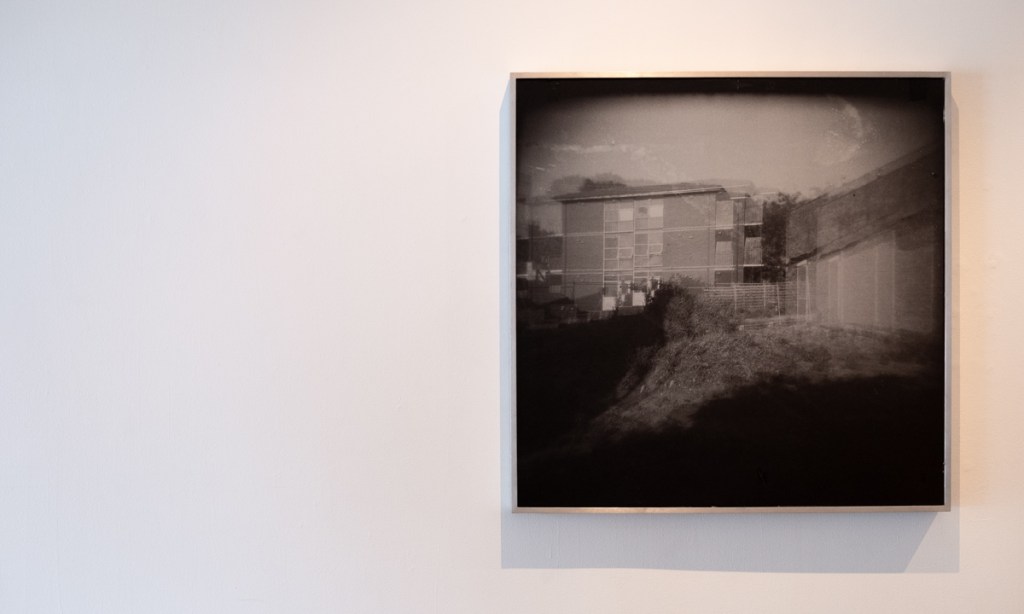
This print looks like an artefact, like a photo taken decades ago. I’m led to think this destroyed landscape and abandoned suburban scene has been sitting, undone, for decades, and might just continue to sit there.
The other prints are in different warm tones – rusty burnt oranges or faded yellows – and all show a clearing in nature. There are materials in the centre with a sign that says ‘4 Sale’ on top. I have questions: What is for sale? The materials or the land? If the land, whose is it to sell? And who is entitled to buy it? Is the sign a passive, and ultimately forgotten, effort towards a post-colonial world?
Some of the prints are framed, some are pinned to the wall like you would pin a Polaroid to a cork board at home. Some have layers of images stuck on layers of images. There are negatives, and chemically and digitally altered images. As the subject of these prints is mid-construction, the prints themselves feel like they, too, are in the middle of being created.

The back gallery is a starkly different tone. Convex safety mirrors are scattered high and low, linked by text in silver paint along the walls, and dotted lines like road lane markings.
Standing in this room, a small space with bright, white walls and mirrors staring back at you, you are on display, even if only to yourself. Seeing many different versions of myself, distorted by the convex mirrors, makes me smile. There is no blind spot – as the piece is titled – which is equally fun and intimidating.
The artist, Miriam Sims, asks us to be a part of this piece, to not only see ourselves in the mirrors, but to play with the objects. How often would we stop and interact with one of these mirrors in our day-to-day life? How often do we even notice these elements of urban life?
As I stretch my arm up to touch one of the mirrors, I see the word ‘stretch’ flowing across it and onto the wall. I wonder: did I mirror the instruction, or is the instruction a mirror of the artist’s earlier action? Either way, it makes me laugh.

This piece was contributed as part of FELTspace’s FELTwriter program. For more information on the program, see the website.
I watch the third piece from home, where I am in my own resting state. It’s Kasia Tons’ moving image work Forest. It’s the FELTdark element of the exhibition, which can be seen through the FELTspace front window from dusk to midnight on days the gallery’s open (Wednesday through Saturday). I watch this on a night when wild storms are bustling across Adelaide.
This piece looks at the harshness of change and the value we place on space. The vision shows a natural forested landscape where the artist has been taking walks her whole life.
It’s just over three minutes long and takes you through an environment you could imagine once being lush and rich with vegetation. Now, it’s half of what it could be, because of a ute driving through day after day, or bushfires, or construction sites that have left behind fluorescent orange flags and mesh fencing, or even people like the artist herself walking through. It’s all human infringement on natural space.
Scenes of Tons’ work fade into each other, and occasional jumps and jolts mimic the effects a faulty antenna on an old TV – a feeling of lost connection. Outside my home, aggressive weather is building and will cause blackouts across the state; however, our lost connection with the environment can’t be blamed on blackouts.
As winds rage, I begin to think of the weather as nature’s attempt to disrupt us from our daily distractions – or perhaps its desire to rid of us altogether.
